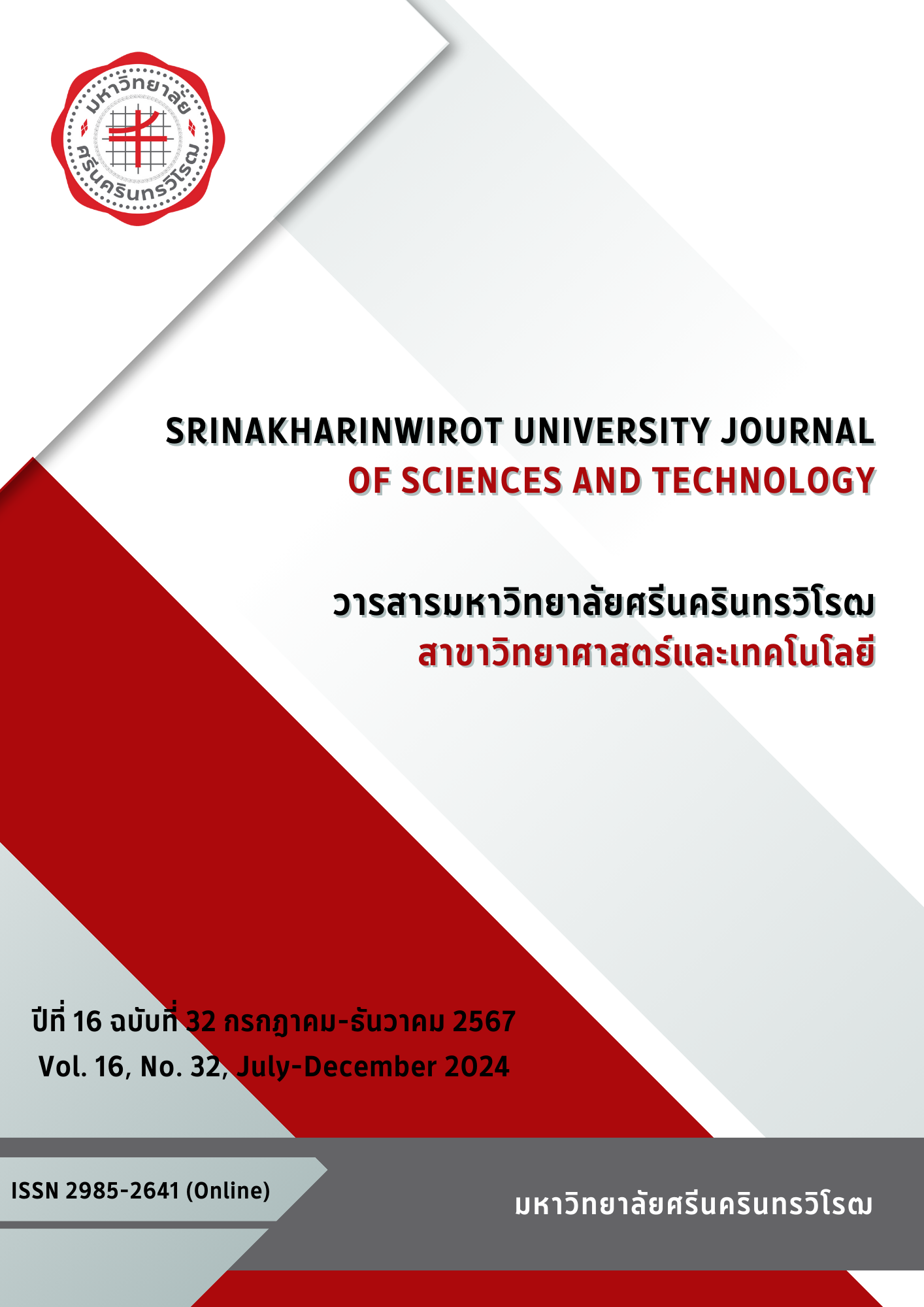IMPACT OF PIGEON PEA FLOUR, ISOMALTULOSE AND INULIN AS A SUBSTITUTE FOR WHEAT FLOUR, SUGAR AND FAT IN TOFFEE CAKE PRODUCTS
Keywords:
Pigeon Pea, High Protein Flour, Toffee Cake, Healthy BakeryAbstract
Pigeon pea (Cajanus cajan) is a legume that is high in protein, low in fat, and contains higher amounts of several amino acids as compared to soybeans. In order to utilize pigeon pea in a healthy diet, the purpose of this research was to apply high-protein flour from pigeon pea to a healthy toffee cake product by substituting wheat flour. Moreover, the healthy ingredients for sugar and fat substitutes were added by using isomaltulose and inulin. The response surface method (RSM) experiment was planned, and the Box-Behnken experiment was designed in order to select the appropriate recipes for further analysis. Sensory evaluation of all toffee cake recipes showed that the toffee cake recipe with 4.0% (w/w) pigeon pea flour, 5.2% (w/w) isomaltulose, and 0.2% (w/w) inulin was highly accepted by the panelists (100% consumer acceptance). In addition, the appropriate toffee cake recipe, which was determined by the sensory and textural liking score, found that the suitable components of the toffee cake formula were 6.0% (w/w) pigeon pea flour, 5.2% (w/w) isomaltulose, and 0.5% (w/w) inulin. For toffee cake appearance and microstructure, which were determined by SEM, an increase in pigeon pea flour tends to change air pocket distribution and size of the toffee cake texture. The texture characteristics of the healthy toffee cake recipes showed that the hardness, gumminess, and chewiness were increased as compared to the control. The appropriate toffee cake recipe, which was determined by the sensory textural liking score (6.0% (w/w) pigeon pea flour, 5.2% (w/w) isomaltulose, and 0.5% (w/w) inulin), was chosen for nutritional analysis. The results showed that it contained 8.52 grams of protein per 100 grams. It also contains 34% less sugar than the control recipe (the healthy toffee cake formula has a total sugar content of 12.63 grams per 100 g). Hence, the healthy toffee cake formula containing pigeon pea flour obtained from this research can be further developed for commercial distribution.
Downloads
References
Nicolosi, A., Laganà, V. R., and Di Gregorio, D. (2023). Habits, health and environment in the purchase of bakery products: Consumption preferences and sustainable inclinations before and during COVID-19. Foods, 12(8), Article number 1661.
Mickiewicz, B., and Britchenko, I. (2022). Main trends and development forecast of bread and bakery products market. VUZF Review, 7, 113-123.
Zeng, X., Wang, M., Chen, L., and Zheng, B. (2023). Impact of using whole chestnut flour as a substitute for cake flour on digestion, functional and storage properties of chiffon cake: A Potential application study. Food Chemistry, 432, Article number 137016.
Wang, Y., and Jian, C. (2022). Sustainable plant-based ingredients as wheat flour substitutes in bread making. NPJ science of food, 6(1), Article number 49.
Abebe, B. (2022). The Dietary use of pigeon pea for human and animal diets. Scientific World Journal, 2022, Article Number 4873008.
Saxena, K., Kumar, R., and Sultana, R. (2010). Quality nutrition through pigeonpea—a review. Health, 2, 1335-1344.
Olanipekun, B., Abioye, V., Oyelade, J., and Osemobor, C. (2018). Potentials of pigeon pea-wheat flour mixes in bread production. Asian Food Science Journal, 4, 1-8.
Olatunde, S., Ajayi, O. M., Ogunlakin, G., and Ajala, A. (2019). Nutritional and sensory properties of cake made from blends of pigeon pea, sweet potato and wheat flours. Food Research, 3, 456-462.
Dubois, M., Gills, K. A., Hamilton, J. K., Reber, P. A., and Smith, F. (1956). Colorimetric methods for determination of sugar and related substances. Analytical Chemistry, 28, 350-355.
AOAC. (2019). Official methods of analysis of the association of official analytical chemists: Official methods of analysis of AOAC International. 21st Edition, AOAC, Washington DC.
Kweon, M., Slade, L., and Levine, H. (2016). Cake baking with alternative carbohydrates for potential sucrosereplacement. I. Functionality of small sugars and their effects on high-ratio cake-baking performance. Cereal Chemistry, 93, 562-567.
Guleria, P., and Yadav, B. S. (2022). Effect of chemical treatments on the functional, morphological and rheological properties of starch isolated from pigeon pea (Cajanus cajan). Current Research in Food Science, 5, 1750-1759.
Nawaz, H., and Arêas, E. (2013). Chemistry and applications of polysaccharide solutions in strong electrolytes/dipolar aprotic solvents: An overview. Molecules (Basel, Switzerland), 18, 1270-1313.
Locali-Pereira, A. R., Boire, A., Berton-Carabin, C., Taboga, S. R., Solé-Jamault, V., and Nicoletti, V. R. (2023). Pigeon Pea, an emerging source of plant-based proteins. ACS Food Science & Technology, 3(11), 1777-1799.
Downloads
Published
How to Cite
Issue
Section
License
Copyright (c) 2024 Srinakharinwirot University Journal of Sciences and Technology

This work is licensed under a Creative Commons Attribution-NonCommercial-NoDerivatives 4.0 International License.
Srinakharinwirot University Journal of Sciences and Technology is licensed Under a Creative Commons Attribution-NonCommercial-NoDerivs 4.0 International (CC-BY-NC-ND 4.0) License, Unless Otherwise Stated. Please Read Journal Policies Page for More Information on Open Access, Copyright and Permissions.



